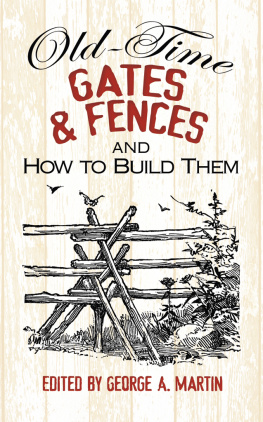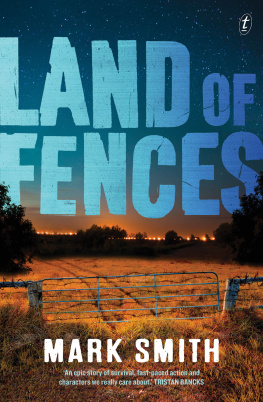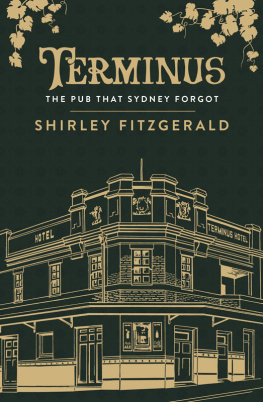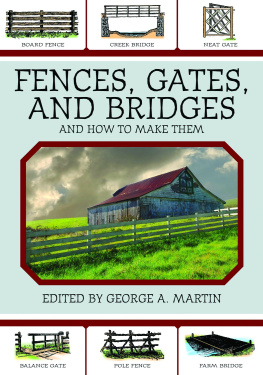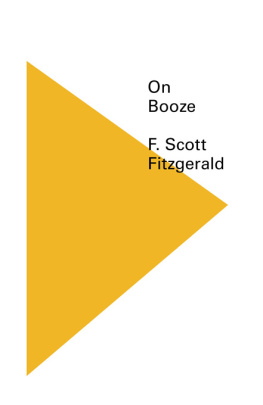James Fitzgerald - The best fences
Here you can read online James Fitzgerald - The best fences full text of the book (entire story) in english for free. Download pdf and epub, get meaning, cover and reviews about this ebook. year: 1984, publisher: Storey Publishing, LLC, genre: Home and family. Description of the work, (preface) as well as reviews are available. Best literature library LitArk.com created for fans of good reading and offers a wide selection of genres:
Romance novel
Science fiction
Adventure
Detective
Science
History
Home and family
Prose
Art
Politics
Computer
Non-fiction
Religion
Business
Children
Humor
Choose a favorite category and find really read worthwhile books. Enjoy immersion in the world of imagination, feel the emotions of the characters or learn something new for yourself, make an fascinating discovery.

- Book:The best fences
- Author:
- Publisher:Storey Publishing, LLC
- Genre:
- Year:1984
- Rating:3 / 5
- Favourites:Add to favourites
- Your mark:
- 60
- 1
- 2
- 3
- 4
- 5
The best fences: summary, description and annotation
We offer to read an annotation, description, summary or preface (depends on what the author of the book "The best fences" wrote himself). If you haven't found the necessary information about the book — write in the comments, we will try to find it.
The best fences — read online for free the complete book (whole text) full work
Below is the text of the book, divided by pages. System saving the place of the last page read, allows you to conveniently read the book "The best fences" online for free, without having to search again every time where you left off. Put a bookmark, and you can go to the page where you finished reading at any time.
Font size:
Interval:
Bookmark:
James FitzGerald
Although this bulletin concerns itself principally with the practical aspects of fences, dont overlook the fact that you are working with one of the most profound developments in the history of mankind. Next to the wheel and the plow, the fence ranks high as a major landmark in the progress of civilization. Historically, it was such a simple tool and yet it gave man the enormous capability of making boundaries, separations, edges, and limits. For the first time, a man could organize his geography and the things in it. He could keep things in and keep things out. He could contain his livestock, defend himself with barriers, and define his territory.
Fences evolved from a simple enclosure for domesticated animals in 4000 B.C. to a massive statement of power in the form of the Great Wall of China which extended 3,000 miles in 300 B.C.
In addition to being a mere physical boundary, a fence carries a genuine and deep psychological significance. Standing as a crude wooden sculpture between fields or as an elaborate wrought iron entrance to a chateau, it symbolizes the basic way we handle the vastness of life. It fulfills our ancient human need to create manageable units out of chaos. Not only does it afford us a way to organize our physical spaces, but more fundamentally, it reflects the primal way we define our psychological spaces; mine/yours; me/you.
A fence simply lets us define ourselves and our world. It is a monument to Order.
The best way to avoid mistakes is to know where they are hiding. In the list below I have defined eight of the major areas in which big mistakes occur. Sections of this bulletin deal with each of these potential problem areas.
 How to plan ahead.
How to plan ahead.
 How to construct a legal fence.
How to construct a legal fence.
 How to avoid fence post problems.
How to avoid fence post problems.
 How to choose the right type of fence.
How to choose the right type of fence.
 How to save time and energy by using the right tools.
How to save time and energy by using the right tools.
 How to use the best construction technique.
How to use the best construction technique.
 How to construct workable gates.
How to construct workable gates.
 How to build safely.
How to build safely.
Four basic indoor planning steps and an equal number of outdoor planning steps are needed to keep you away from mistakes or miscalculations in building a fence.

Draw a map of your property on inch graph paper ( inch equals one foot).
Using a ruler, sketch in the contemplated fence line. Try to keep the scale accurate.
From your anticipated traffic pattern, locate the gate area first. Mark out the gate posts, then the corner posts, and finally each line post. If you find that the distance between gate post and the corner post is not evenly divisible by eight feet or six feet or whatever your section length will be, you have two choices.
a. Shorten each section a bit so that all sections have identical lengths.
b. Plan for a shorter section next to each corner post. This second option is usually preferred because it wastes less time and materials. It would be very time-consuming if every eight-foot board, for instance, had to be trimmed by 7 inches. Also, these short sections make excellent braces for the corner posts.
Write down the various lengths. For the first time in your life you may be confronted with working in rods. Pasture land boundaries are frequently measured in rods, and rolls of barbed wire always come in rods. Dont panic. A rod is simply 16 feet.
From the above data you can calculate the answers to these basic questions.
a. How many corner posts, bracing posts, and line posts will you need?
b. How many boards, pickets, rails, or bales of wire will you need?
c. How many gates and gate posts will you need?
Once satisfied with your graph paper version, go outside and recreate your ideas on the ground in the next four steps.
Place a stake at the site of each gate post. By starting your fence at each side of the main gate and proceeding with standard size sections toward the corners, you can maintain perfect symmetry around the gate area where fence asymmetry or other defects would be most noticed.
Place stakes at the corners.
Pull masons twine tightly between the gate posts and the corner posts after clearing any brush or obstacles that may be in the way.
Lay a board or rail or any unit of horizontal stringer material along the twine to locate each successive line post location. Mark each spot with a stake.
In this planning phase, dont be shy about asking for help. People who own beautiful fences are very proud of them. They are usually delighted to give you all of the details and help that you want. So if you see a terrific fence, ask about it.
In the back pages of this bulletin, you will find a list of other good fence books. Most of them are full of beautiful photographs and details that may make your job much easier.
Most of the giant catalog stores have at least a small fence section mixed in with garden supply or hardware sections. The prices for materials are usually quite good, especially for items such as pickets, should you like their design. The amount of information you can obtain about fencing construction varies with the salesperson. If you want to talk fencing, the local hardware store personnel are usually unbeatable. They know the local soils and weather conditions, and have a lot of experience with do-it-yourself problems in your area.
If you need professional help with the planning or construction, look in the yellow pages under landscape design, contractors, or fencing materials. Even if you only want help with your plans, ask about estimated costs for their time and services.
First, make sure you are putting the fence on your own property. It is embarrassing to construct a fence on someone elses land, and it can also result in a loss of ownership. Consult your own survey maps or verify your boundary lines at the recording clerks office. Find out if there are any restrictions such as height limits, set-back rules, or construction codes.
If you plan to run the fence exactly on the boundary line between your property and your neighbors, talk with them about it. Even if you fear the possible response, try it. You may get more cooperation than you expect. There are many possible responses. Here are some suggestions for handling the two extreme positions.
Your neighbor may be willing to share construction and maintenance costs, thereby effectively flipping Robert Frosts statement into good neighbors make good fences. If you and your neighbor agree on certain aspects of fence construction, write down what you agree upon so that the details dont get distorted as time goes on.
If you are not fortunate enough to have a concurring neighbor, make sure your fence is located a foot or so inside your property boundaries so there is no ownership dispute.
Font size:
Interval:
Bookmark:
Similar books «The best fences»
Look at similar books to The best fences. We have selected literature similar in name and meaning in the hope of providing readers with more options to find new, interesting, not yet read works.
Discussion, reviews of the book The best fences and just readers' own opinions. Leave your comments, write what you think about the work, its meaning or the main characters. Specify what exactly you liked and what you didn't like, and why you think so.

